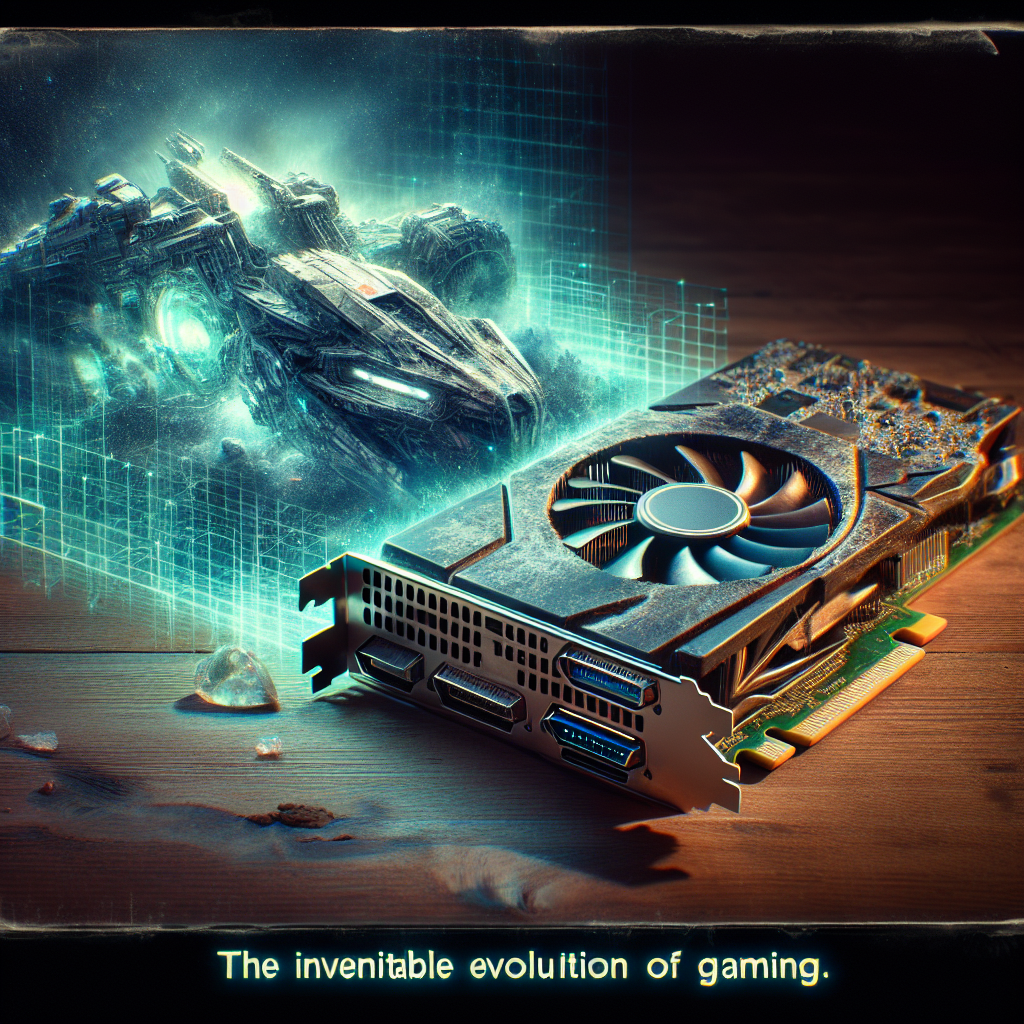Radeon RX 5700-series and Nvidia Pascal-based Cards
Owners of the Radeon RX 5700-series graphics cards are facing a significant issue with the upcoming release of Alan Wake 2. These GPUs lack support for mesh shaders, a feature of DirectX 12 that is crucial for running the game. This limitation is particularly striking given that the architecture of these cards is only four years old.
Comparatively, those with Nvidia Pascal-based cards, which debuted in 2016, are in a similar situation. Although these cards are nearly twice as old as AMD’s RDNA architecture, they too do not support mesh shaders, rendering them incompatible with Alan Wake 2. This situation highlights a broader issue in the gaming industry, where even relatively recent hardware can quickly become outdated due to the rapid pace of technological advancement.

Titan X Pascal GPU Specifications and Experience
| Specification | Details |
|---|---|
| Shaders | 3,584 |
| Texture Mapping Units (TMUs) | 224 |
| Raster Output Pipelines (ROPs) | 96 |
| Memory | 12GB GDDR5X |
The author recounts their personal experience with the Titan X Pascal, a GPU that was once the pinnacle of graphics performance. With its impressive specifications, it was expected to last many years for gaming. However, despite its capabilities, the Titan X Pascal falls short when it comes to modern gaming demands, such as those required by Alan Wake 2. The game’s reliance on mesh shader support, which the Titan X Pascal lacks, means that even this once top-tier GPU cannot run the latest titles that utilize the latest DirectX 12 features.

The Importance of Mesh Shaders in DirectX 12
Mesh shaders are a significant advancement in the DirectX 12 suite, offering a new level of control over geometry processing in games. This technology is crucial for developers to create more detailed and dynamic environments. The impact of mesh shaders on game development and performance can be clearly seen through the 3DMark Mesh Shader Feature Test, which demonstrates how the use of this technology can more than double the frame rate in certain scenarios.
- Improved control over geometry processing
- Ability to create more complex and detailed game environments
- Enhanced performance and efficiency in rendering
- Support for the latest gaming graphics trends and techniques
As game graphics continue to evolve towards more realistic lighting and higher polygon counts, mesh shaders will play an increasingly vital role. They are part of the DirectX 12 Ultimate features, which also include ray tracing and variable rate shading, setting the stage for the next generation of gaming experiences.
Historical Context of Hardware Obsolescence
The relentless progression of graphics technology has a history of rendering hardware obsolete. This trend is exemplified by GPUs like the Radeon R9 290 and the GeForce GTX 970. These cards were once at the forefront of technology, supporting nearly every shader version available at their time of release.
Despite their age, these GPUs still manage to meet the minimum hardware requirements for certain modern games, such as Baldur’s Gate 3. This game is somewhat of an outlier, however, as its graphics engine development began years ago, allowing for broader compatibility with older hardware.
Yet, as the industry moves forward, even these once-capable cards are being left behind. Newer technologies and game development techniques demand more from hardware, pushing the boundaries of what older GPUs can handle. This cycle of advancement and obsolescence is a hallmark of the PC gaming landscape, driving innovation while also necessitating frequent upgrades.
DirectX 12 Ultimate Features and Game Development
DirectX 12 Ultimate is setting a new standard for game development with features like mesh shaders and sampler feedback. These technologies are the last to be widely adopted by game developers, but they are poised to transform the gaming experience. Mesh shaders, for instance, offer a more efficient way to handle geometry, which can lead to significant performance improvements.
| Product | Link |
|---|---|
| Nvidia RTX 4070 Founders Edition | Product Page |
| Nvidia RTX 3080 Founders Edition | Product Page |
As these DirectX 12 Ultimate features become more common in games, GPUs based on architectures older than AMD’s RNDA 2 and Nvidia’s Turing will struggle to keep up. This underscores the importance of staying current with the latest hardware to fully enjoy the advancements in gaming graphics and performance.
The Inevitability of GPU Obsolescence
Even the most powerful GPUs on the market today, such as the Radeon RX 7900 XTX and the GeForce RTX 4090, are not immune to the relentless march of technology. While these graphics cards currently represent the pinnacle of gaming performance, they too will eventually become outdated as new advancements in technology emerge.
This cycle of progression is a fundamental aspect of PC gaming. Gamers who invest in the latest hardware understand that their cutting-edge components will one day be relegated to the annals of history. It’s a cycle that fuels the tech industry, driving research and development, and leading to the continuous improvement of gaming experiences. However, it also means that today’s top GPUs will, in time, be replaced by even more powerful successors.
As gamers, we fund and enjoy the fruits of technological innovation, but we must also come to terms with the fact that the hardware we cherish will, one day, simply collect dust. Such is the nature of the ever-evolving world of PC gaming.

